Modeling and Experimental Verification of Time-Controlled Grinding Removal Function for Optical Components
Abstract
:1. Introduction
2. Principle of TCG
3. Theoretical Modeling of Removal Function
3.1. Velocity Distribution in Material Removal Area
3.2. Pressure Distribution in Material Removal Area
3.3. Degradation of Removal Efficiency Due to Abrasion of Abrasive Belt
3.4. Removal Function Model of TCG
4. Experimental Setup
4.1. Experimental Equipments
4.1.1. Experimental Equipment of TCG
4.1.2. Experimental Equipment of Measurement
4.2. Materials and Methods
5. Results
5.1. Removal Function Experiment
5.2. Shaping Experiment
6. Discussion
7. Conclusions
- (1)
- Based on the Preston equation, the TCG removal function model is established. The velocity distribution and pressure distribution in the contact area will show periodic changes with the vibration of the contact wheel, and the material removal efficiency is highest in the area that is always in contact with the contact wheel in one cycle. The abrasive belt wear has a large impact on the contour of the removal function, resulting in an asymmetric structure of the removal function in the circumferential direction. The 3D contour of the removal function shows an axially symmetric and circumferentially asymmetric prismatic cone. The horizontal section of the removal function shrinks in the axial and circumferential directions along the depth.
- (2)
- Based on the removal function experiments, the validity and robustness of the TCG removal function model is verified. Through the comparative analysis of the experimental removal function and the theoretical removal function, the axial and circumferential contours of the theoretical removal function and the experimental removal function are fitted well. It is worth noting that there are some deviations between the experimental removal function and the theoretical removal function, which may be caused by the tilt of the contact wheel and the workpiece contact, resulting in the deviation in the pressure distribution in the actual material removal area and the theory.
- (3)
- Based on the TCG shaping experiment, it is verified that the simulation of the theoretical removal function can guide the actual processing. Based on the 20% single material removal, the theoretical and actual surface shape errors converge from 6.497 μm PV and 1.318 μm RMS to 5.079 μm PV and 1.051 μm RMS and 5.397 μm PV and 1.115 μm RMS, respectively. By comparing the simulated machining results with the experimental machining results, the difference between the two surface shape errors is 0.318 μm PV and 0.064 μm RMS. The reason for the difference between the simulated and actual machining results is mainly due to the extraction error of the removal function. The results verify that the theoretical removal function model established in this paper can guide the actual TCG shaping experiments.
- (4)
- TCG takes into account polishing characteristics while shaping. During the TCG shaping experiments, the surface roughness of glass-ceramic is improved from 271 nm Ra to 143 nm Ra, proving that the surface roughness of TCG is improved while shaping.
Author Contributions
Funding
Data Availability Statement
Conflicts of Interest
References
- Cooper, K. The first science from the JWST. Phys. World 2023, 36, 33. [Google Scholar] [CrossRef]
- Comley, P.; Morantz, P.; Shore, P.; Tonnellier, X. Grinding metre scale mirror segments for the E-ELT ground based telescope. CIRP Ann.-Manuf. Technol. 2011, 60, 379–382. [Google Scholar] [CrossRef] [Green Version]
- Zhang, J.Y.; Qin, T.; Xie, Z.X.; Sun, L.T.; Lin, Z.Y.; Cao, T.H.; Zhang, C.T. Design of Airborne Large Aperture Infrared Optical System Based on Monocentric Lens. Sensors 2022, 22, 9907. [Google Scholar] [CrossRef] [PubMed]
- Yang, B. Research on Ion Beam Figuring System and Processing Technology for Large Aperture Optics. Ph.D. Thesis, National University of Defense Technology, Changsha, China, 2018. [Google Scholar]
- Zhang, Z.; Yao, P.; Li, X.; Wang, J.; Huang, C.; Zhu, H.; Zou, B.; Liu, H. Grinding performance and tribological behavior in solid lubricant assisted grinding of glass-ceramics. J. Manuf. Process. 2020, 51, 31–43. [Google Scholar] [CrossRef]
- Shen, J.Y.; Wang, J.Q.; Jiang, B.; Xu, X.P. Study on wear of diamond wheel in ultrasonic vibration-assisted grinding ceramic. WEAR 2015, 332–333, 788–793. [Google Scholar] [CrossRef]
- Ding, H.H.; Yang, J.Y.; Wang, W.J.; Liu, Q.Y.; Guo, J.; Zhou, Z.R. Wear mechanisms of abrasive wheel for rail facing grinding. WEAR 2022, 504–505, 204421. [Google Scholar] [CrossRef]
- Ma, L.J.; Yu, A.B.; Gu, L.C.; Wang, H.; Chen, J. Mechanism of compound fracture and removal in grinding process for low-expansion glass ceramics. Int. J. Adv. Manuf. Technol. 2017, 91, 2303–2313. [Google Scholar] [CrossRef]
- Sun, G.Y.; Shi, F.; Zhao, Q.L.; Ma, Z.; Yang, D.L. Material removal behaviour in axial ultrasonic assisted scratching of Zerodur and ULE with a Vickers indenter. Ceram. Int. 2020, 46, 14613–14624. [Google Scholar] [CrossRef]
- Zheng, F.F.; Kang, R.K.; Dong, Z.G.; Guo, J.; Liu, J.T.; Zhang, J.T. A theoretical and experimental investigation on ultrasonic assisted grinding from the single-grain aspect. Int. J. Mech. Sci. 2018, 148, 667–675. [Google Scholar] [CrossRef]
- Zheng, K.; Liao, W.H.; Sun, L.J.; Meng, H. Investigation on grinding temperature in ultrasonic vibration-assisted grinding of zirconia ceramics. Mach. Sci. Technol. 2019, 23, 612–628. [Google Scholar]
- Yang, C.; Ding, W.F.; Zhao, B. Effect of intermittent cutting behavior on the ultrasonic vibration-assisted grinding performance of inconel718 nickel-based superalloy. Precis. Eng. 2022, 78, 248–260. [Google Scholar]
- Ding, W.F.; Cao, Y.; Zhao, B.; Xu, J.H. Current Status and Prospects of Research on Ultrasonic Vibration-Assisted Grinding Technology and Equipment. Chin. J. Mech. Eng. 2022, 58, 244–269. [Google Scholar]
- Yan, S.J.; Xu, X.H.; Yang, Z.Y.; Zhu, D.H.; Ding, H. An improved robotic abrasive belt grinding force model considering the effects of cut-in and cut-off. J. Manuf. Process. 2019, 37, 496–508. [Google Scholar] [CrossRef]
- Fess, E.; Schoen, J.; Bechtold, M.; Mohring, D. UltraForm finishing. In Optifab 2005: Technical Digest; SPIE: Orlando, FL, USA, 2005. [Google Scholar]
- Fess, E.; DeFisher, S.; Cahill, M.; Wolfs, F. Development of manufacturing technologies for hard optical ceramic materials. In Window and Dome Technologies and Materials XIV; SPIE: Baltimore, MD, USA, 2015. [Google Scholar]
- Liu, Q.; Li, Q.; Chen, Z.; Li, Y.Q.; Zhou, X.Q.; Wang, R.Q.; Xu, P.Z. Study on abrasive belt grinding process assisted by ultrasonic elliptic vibration. Int. J. Adv. Manuf. Technol. 2022, 120, 4647–4661. [Google Scholar] [CrossRef]
- Ren, L.J.; Wang, N.; Wang, X.H.; Li, X.T.; Li, Y.C.; Zhang, G.P.; Lei, X.Q. Modeling and analysis of material removal depth contour for curved-surfaces abrasive belt grinding. J. Mater. Process. Technol. 2023, 316, 117945. [Google Scholar] [CrossRef]
- Wang, N.N.; Zhang, G.P.; Pang, W.J.; Ren, L.J.; Wang, Y.P. Novel monitoring method for material removal rate considering quantitative wear of abrasive belts based on LightGBM learning algorithm. Int. J. Adv. Manuf. Technol. 2021, 114, 3241–3253. [Google Scholar] [CrossRef]
- Jones, R.A. Optimization of computer controlled polishing. Appl. Opt. 1977, 16, 218–224. [Google Scholar] [CrossRef]
- Hu, H.; Chen, X.L.; Sun, Z.Z.; Dai, Y.F.; Guan, C.L. Deterministic figuring method by abrasive belt for high-precision shaft parts. J. Natl. Univ. Def. Technol. 2023, 45, 167–173. [Google Scholar]
- Preston, F.W. The Theory and Design of Plate Glass Polishing Machine. J. Soc.Glass Technol. 1927, 11, 214. [Google Scholar]
- Hertz, H. On the contact of elastic solids. J. Reine Angew. Math. 1881, 92, 156–171. [Google Scholar]
- Lv, G.M. Experimentation and Process Research on Belt Grinding Process of Rail Material. Master’s Thesis, Hunan University, Changsha, China, 2018. [Google Scholar]
- Wang, W.; Liu, F.; Liu, Z.H.; Yun, C. Prediction of depth of cut for robotic belt grinding. Int. J. Adv. Manuf. Technol. 2017, 91, 699–708. [Google Scholar] [CrossRef]
- Sun, Z.; Dai, Y.; Hu, H.; Tie, G.; Guan, C.; Chen, X. Research on Deterministic Figuring of Ultra-Precision Shaft Parts Based on Analysis and Control of Figuring Ability. Materials 2020, 13, 2458. [Google Scholar] [CrossRef] [PubMed]
- Wu, S.H.; Kazerounian, K.; Gan, Z.X.; Sun, Y.Q. A simulation platform for optimal selection of robotic belt grinding system parameters. Int. J. Adv. Manuf. Technol. 2013, 64, 447–458. [Google Scholar] [CrossRef]
- Song, Y.X.; Liang, W.; Yang, Y. A method for grinding removal control of a robot belt grinding system. J. Intell. Manuf. 2012, 23, 1903–1913. [Google Scholar] [CrossRef]
- Liu, D.B.; Deng, Z.C.; Xiao, G.J.; Liu, G. Material removal and belt wear in laser assisted grinding TC17. Mater. Manuf. Process. 2023, 38, 577–588. [Google Scholar] [CrossRef]
- Wan, Q.H.; Zou, L.; Liu, S.Q.; Wang, T.T.; Chen, S.T.; Huang, Y. Investigation on abrasive wear mechanism of single diamond grain in flexible scribing titanium alloy. Diam. Relat. Mater. 2021, 120, 108631. [Google Scholar] [CrossRef]
- Wang, B.J.; Dou, D.Y.; Shen, N. An intelligent belt wear fault diagnosis method based on deep learning. Int. J. Coal. Prep. Util. 2023, 43, 708–725. [Google Scholar] [CrossRef]
- Mulhearn, T.O.; Samuels, L.E. The abrasion of metals: A model of the process. WEAR 1962, 5, 478–498. [Google Scholar] [CrossRef]
- Lai, T.; Peng, X.Q.; Tie, G.P.; Yang, C. Calculation of Effect Ratio of 21 Geometric Errors and Detection of Surface Figure Error. Int. J. Precis. Eng. Man. 2021, 22, 523–538. [Google Scholar] [CrossRef]
- ZERODUR® Glass-Ceramics Physical Properties. Available online: https://www.schott.com/zh-cn/products/zerodur-p1000269/technical-details?tab=94a500186e9c4dc88469136f9c65fa4a (accessed on 26 June 2023).

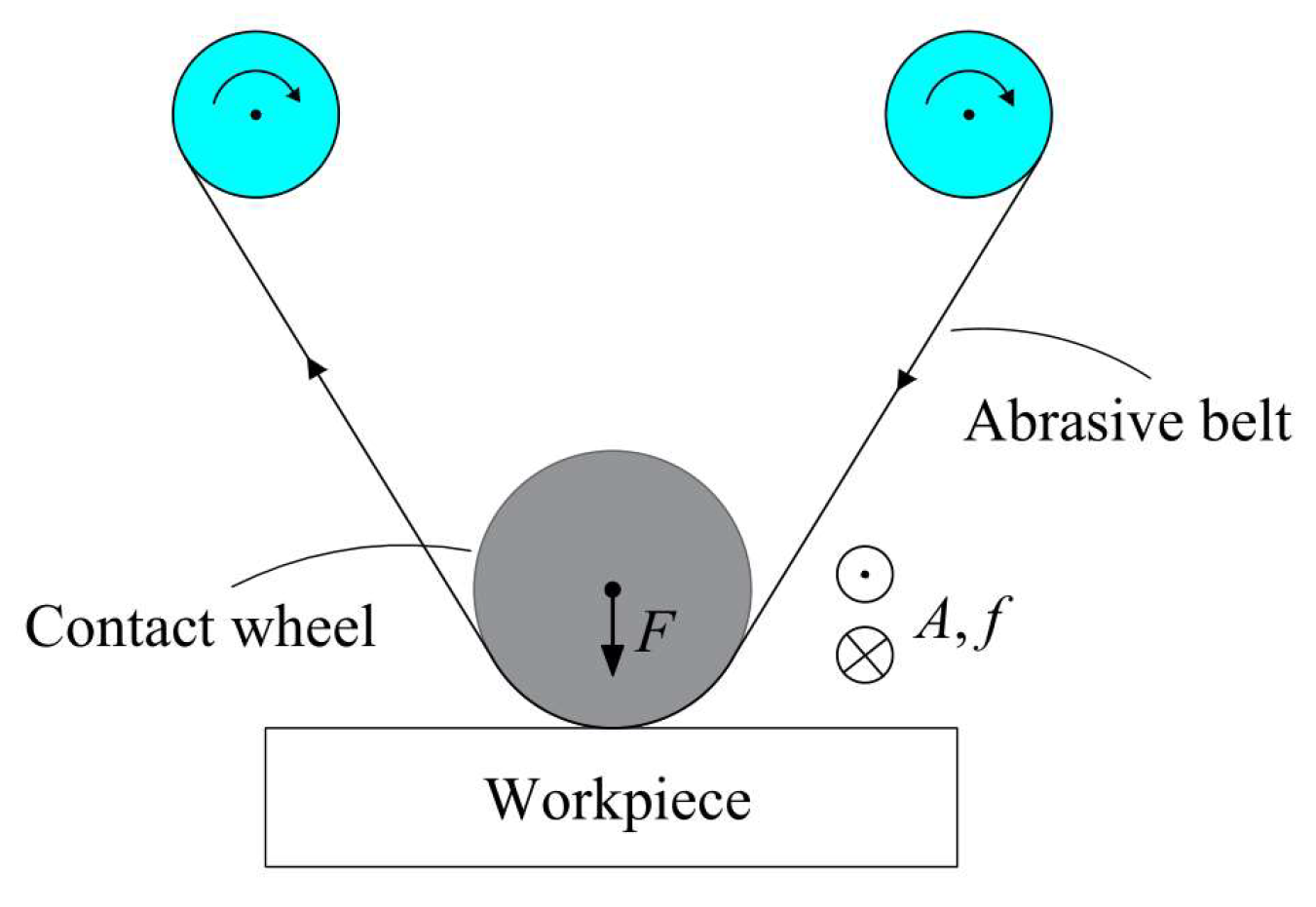
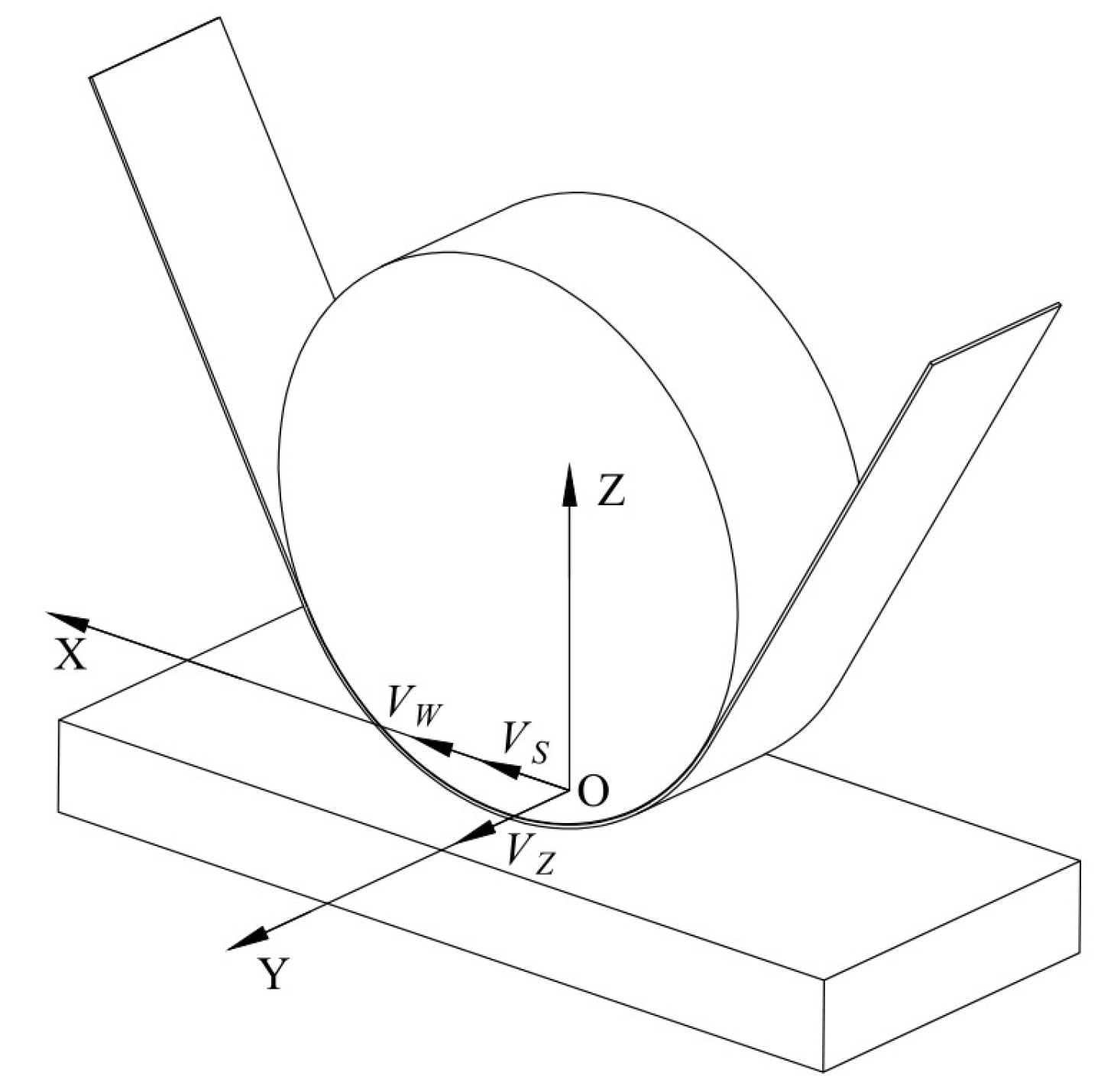




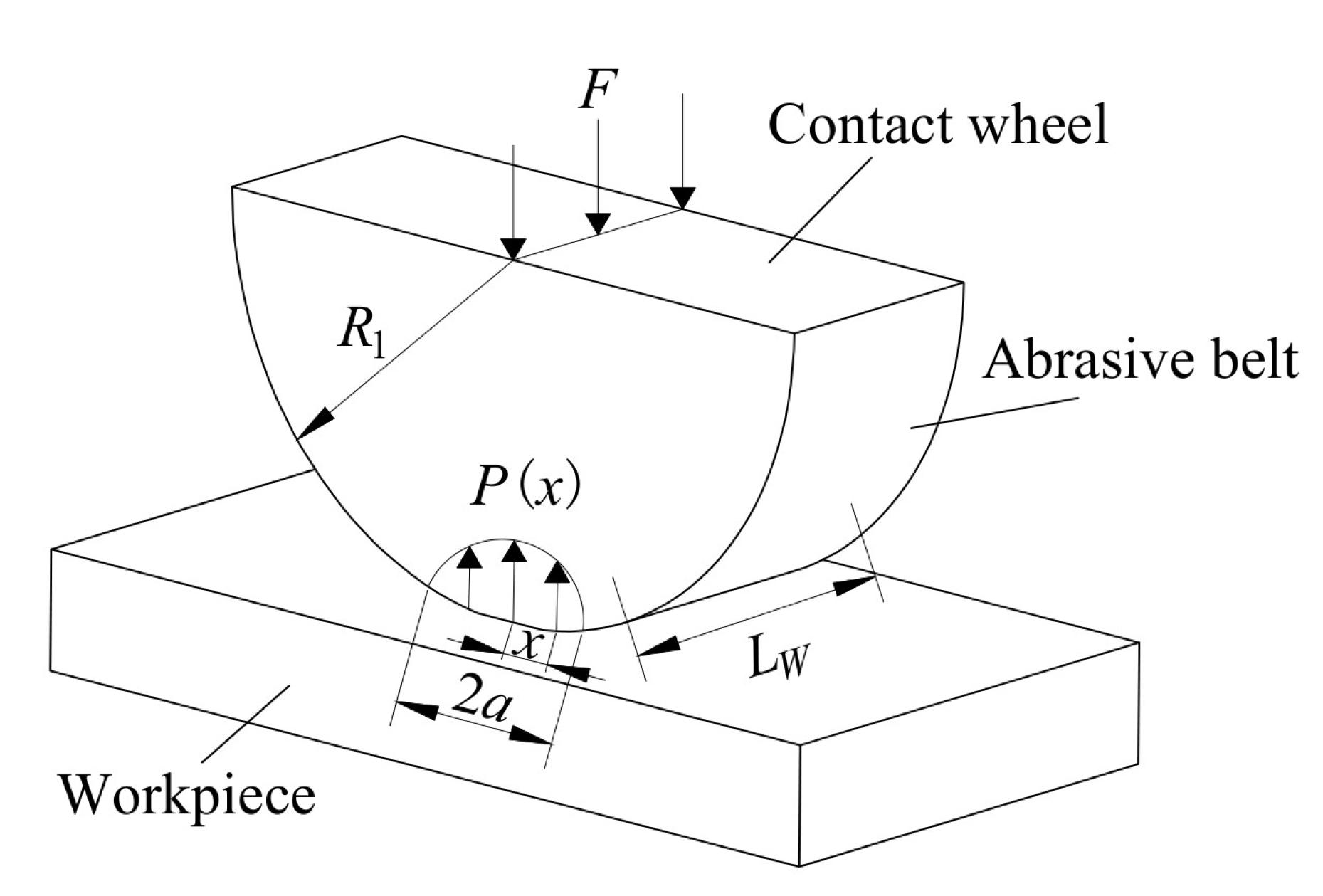
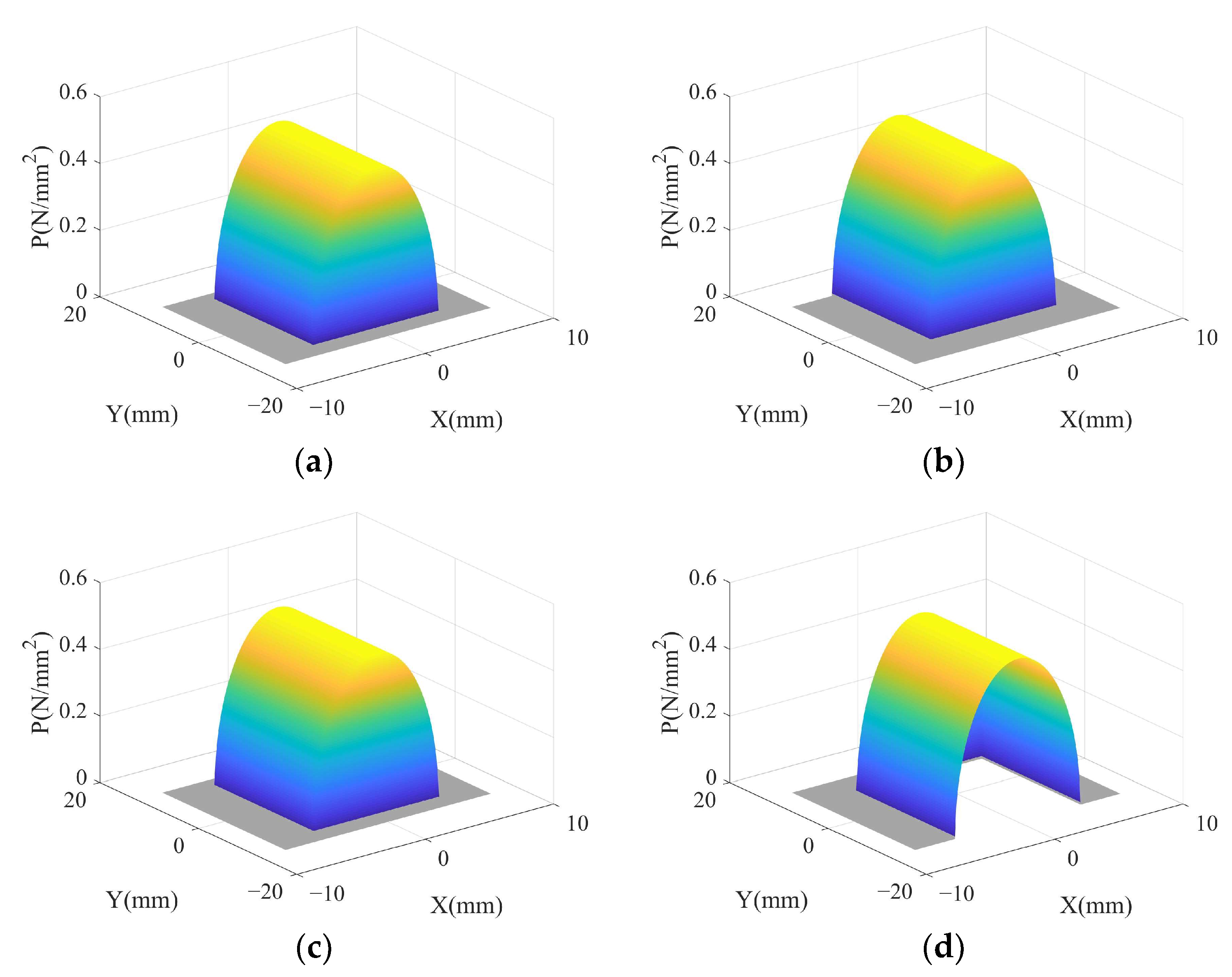
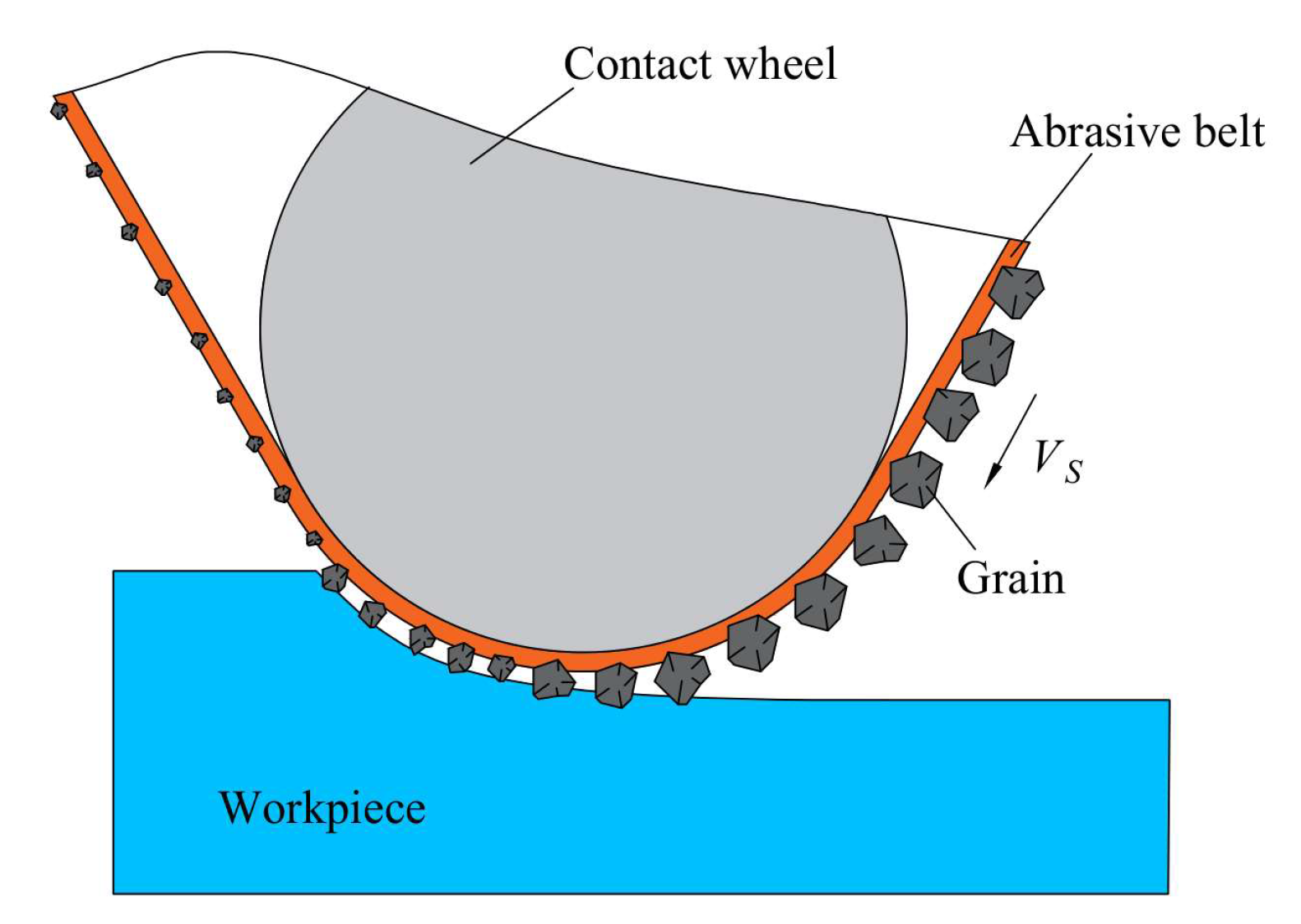
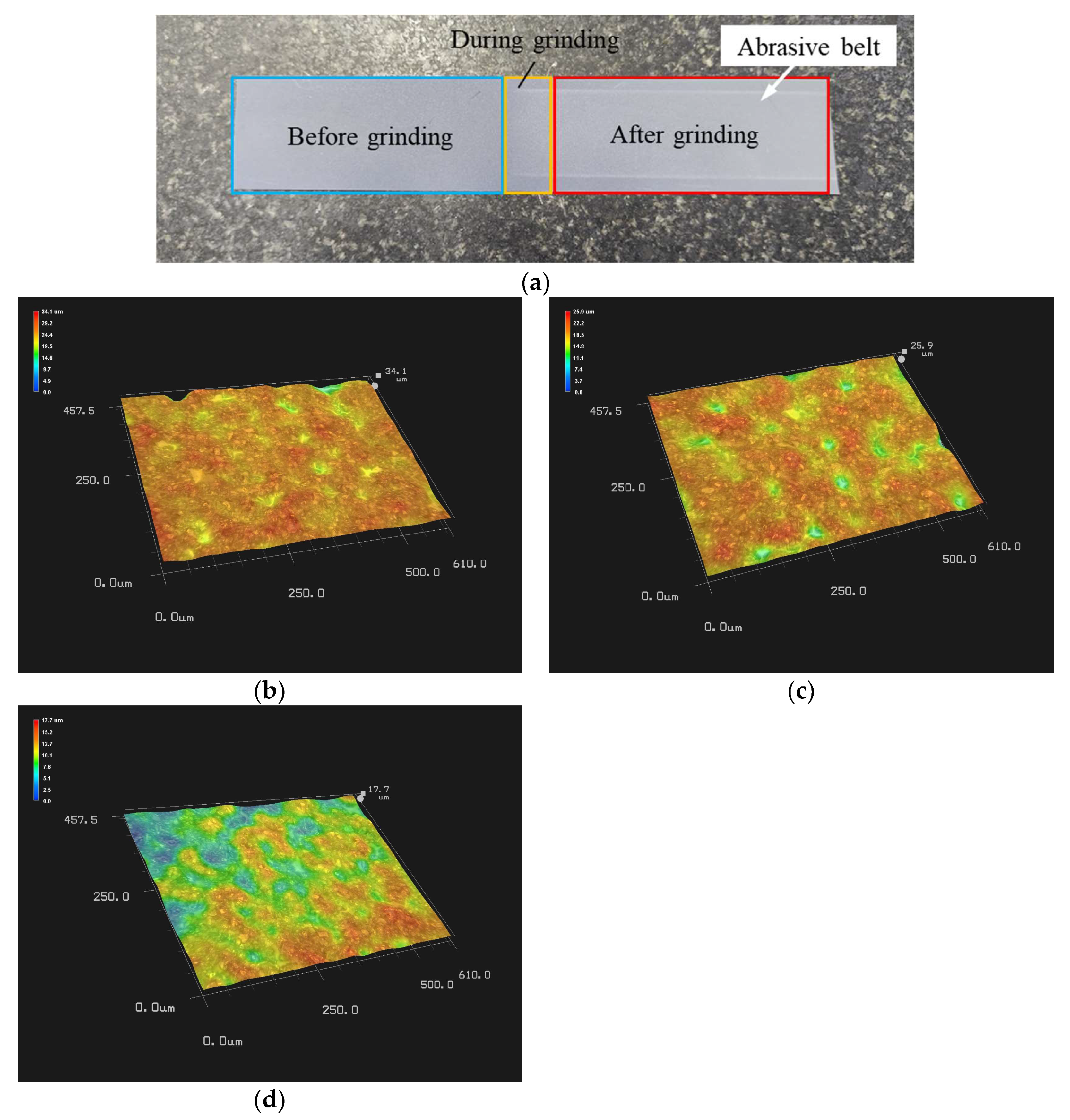
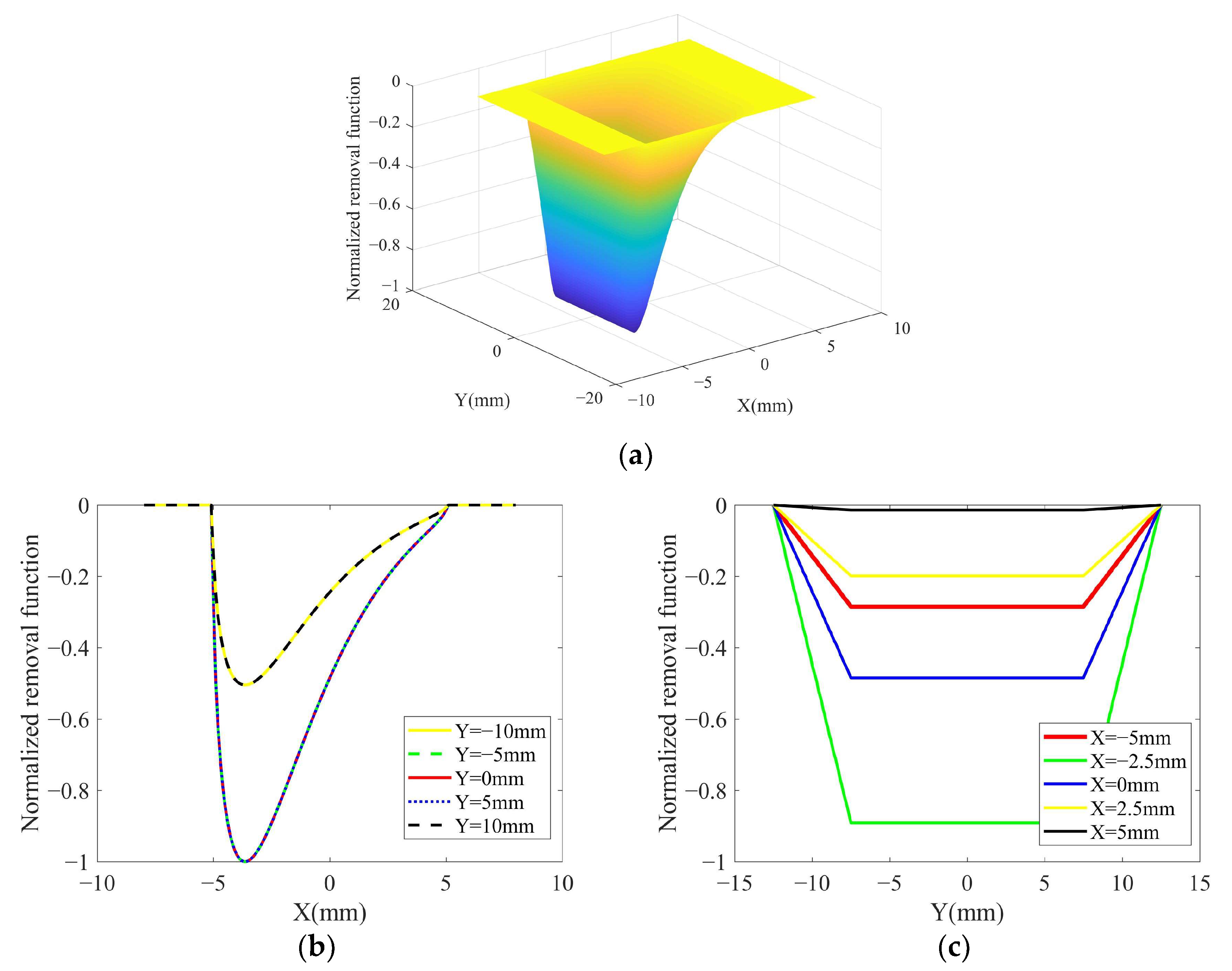

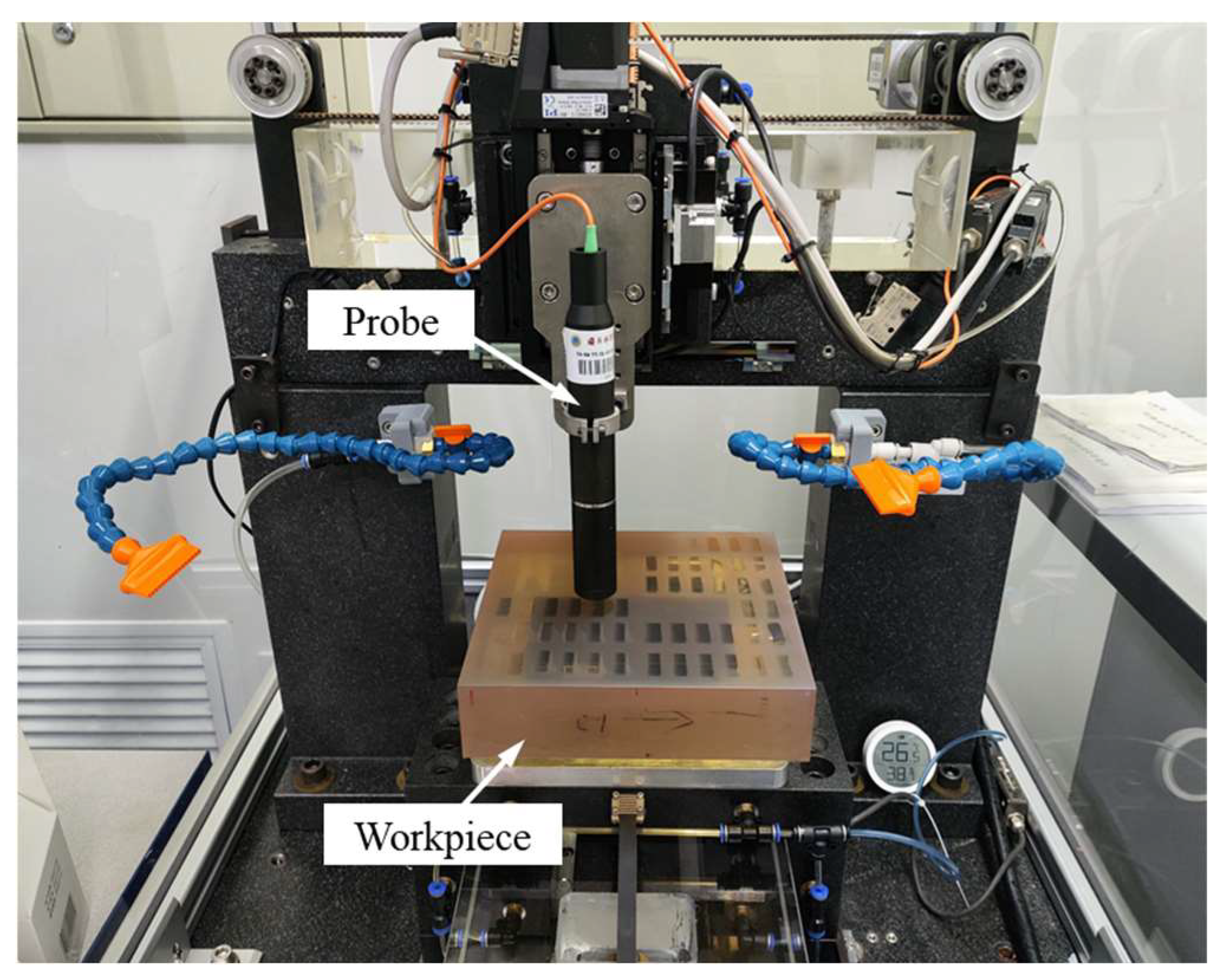
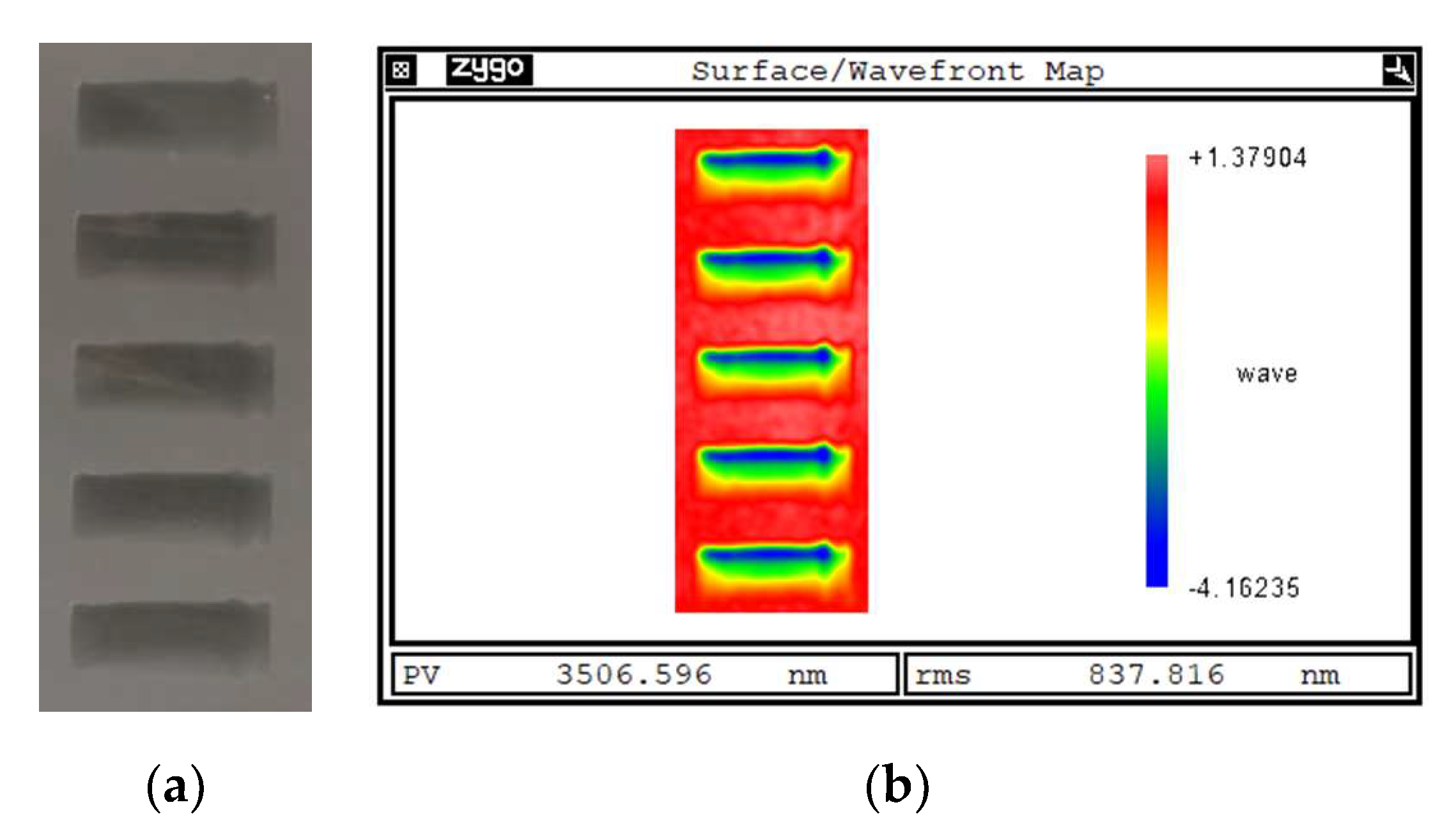
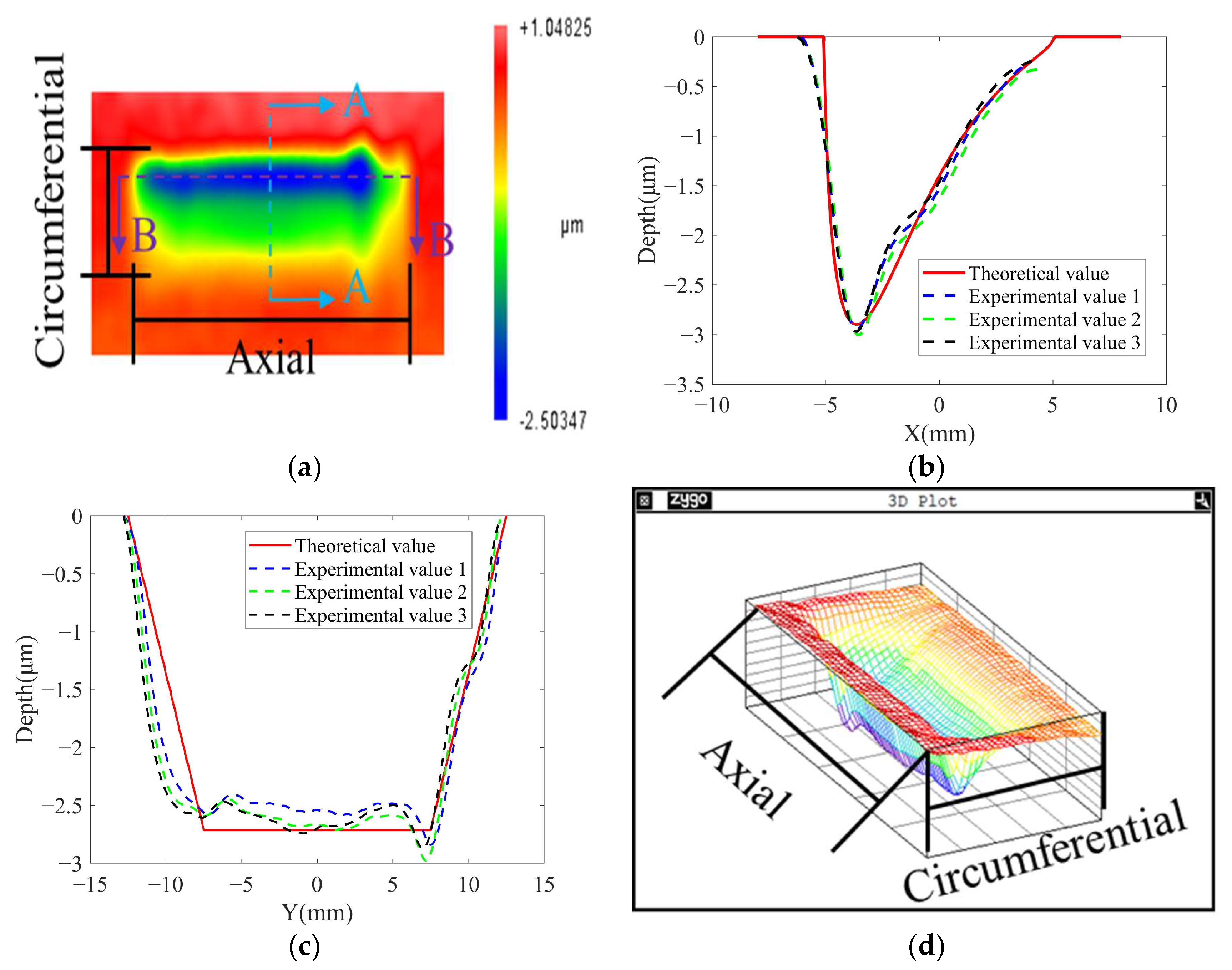
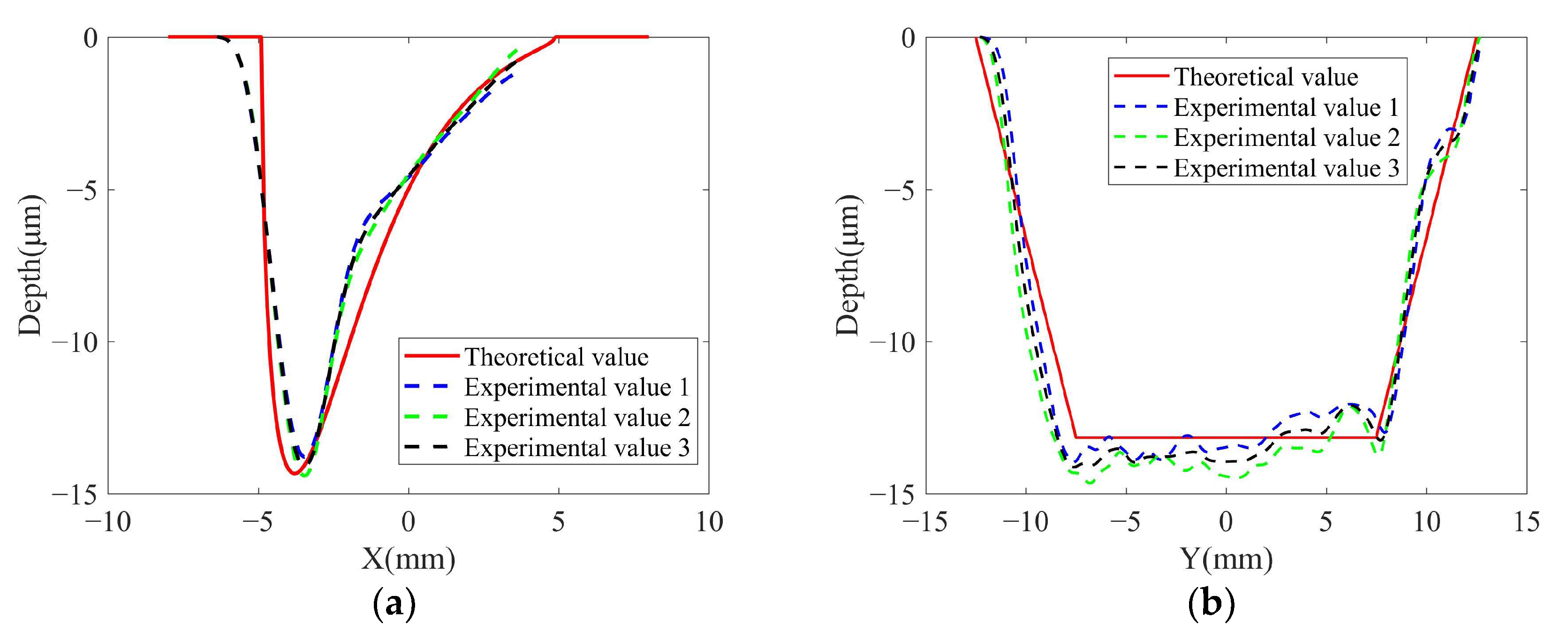
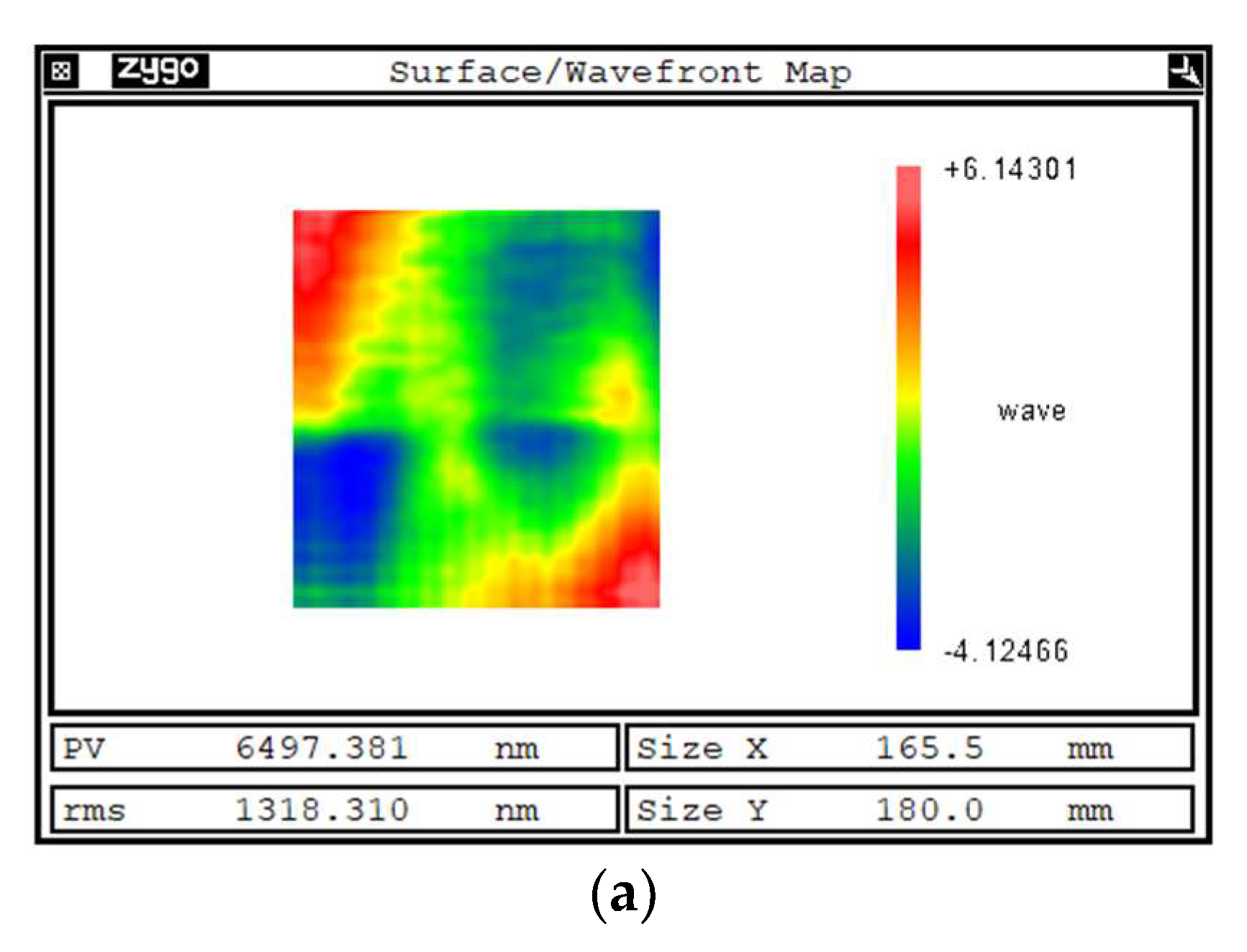
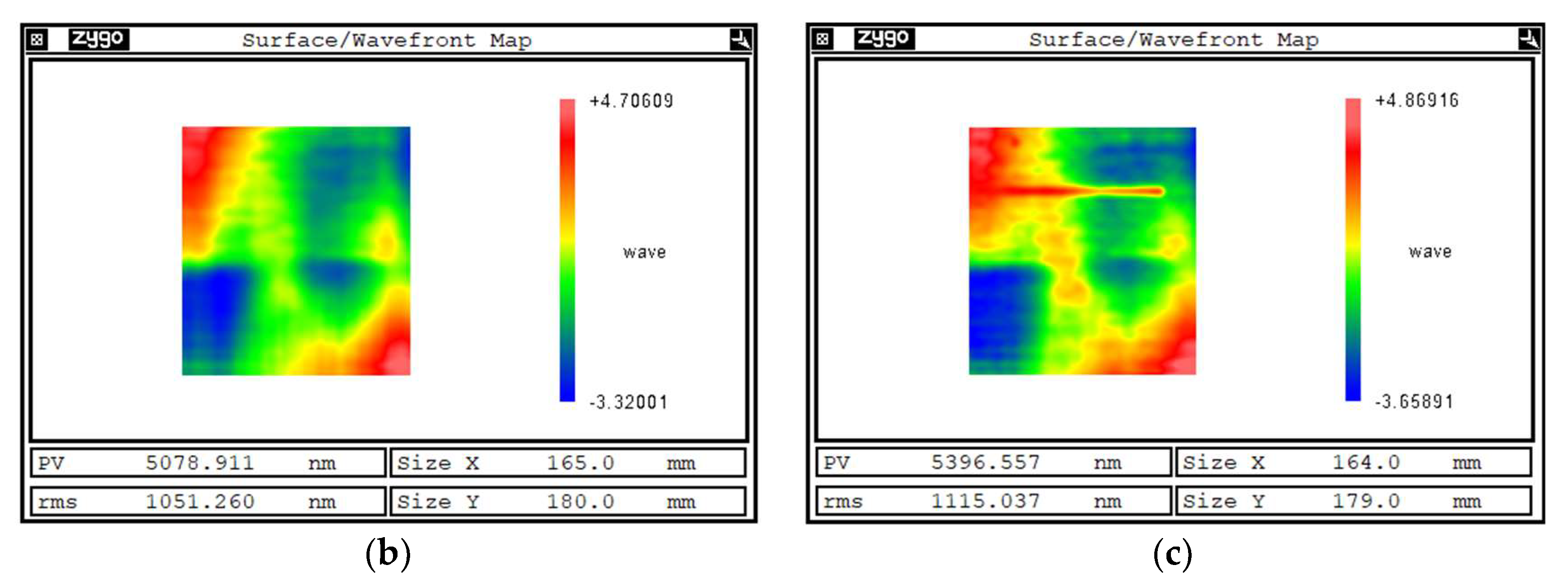
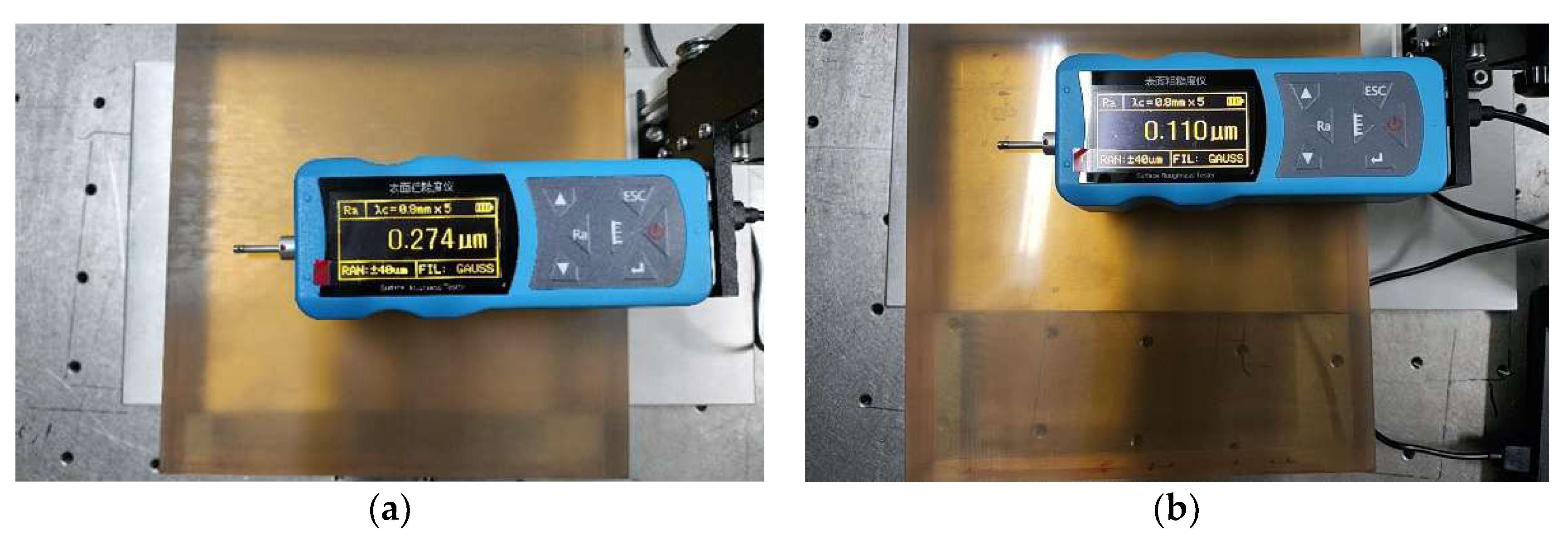
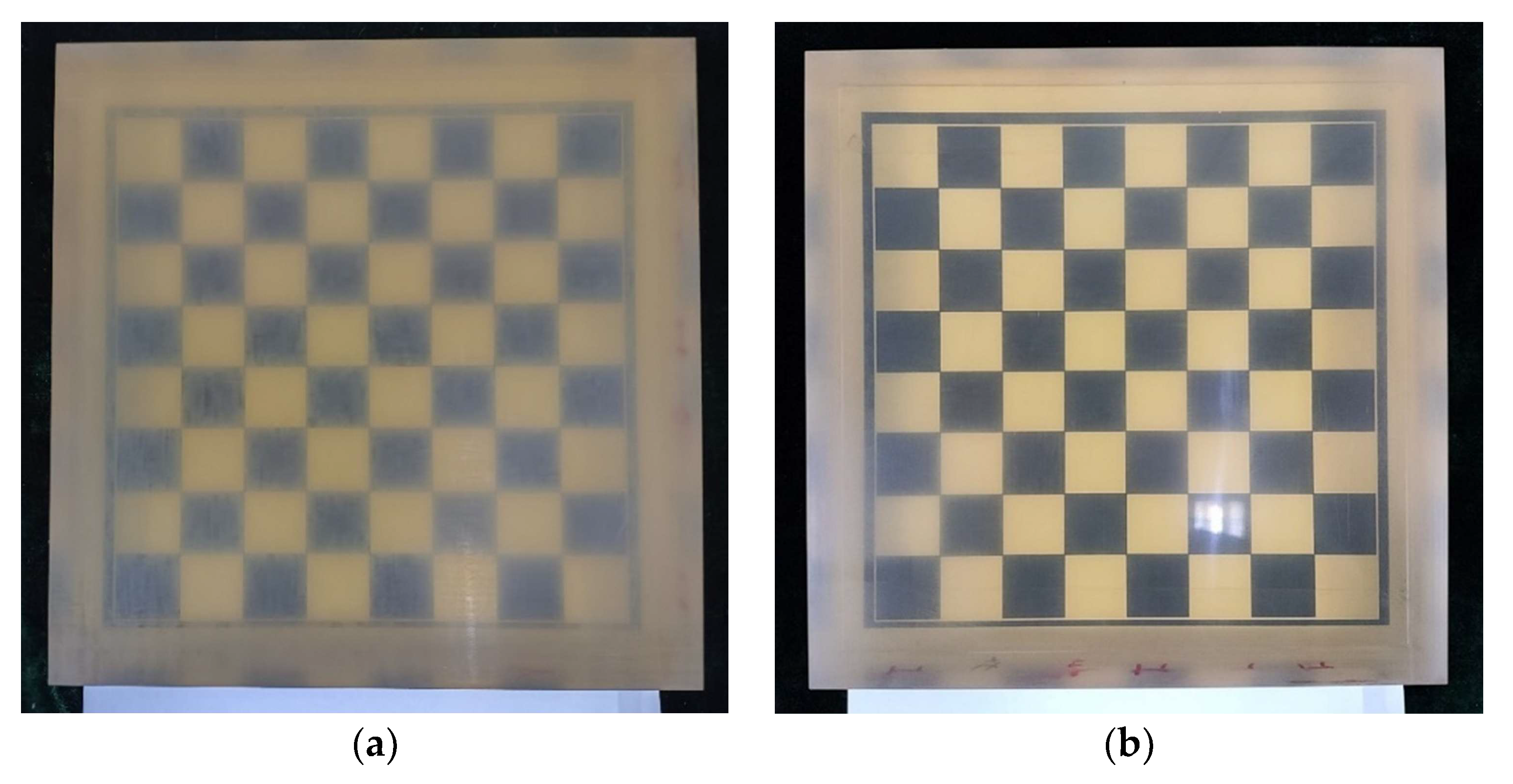
| Properties | Value |
|---|---|
| Measuring range (mm) | 200 × 200 × 52 |
| Spatial resolution X/Y direction (μm) | 1.7 |
| Spatial resolution Z direction (nm) | 22 |
| Maximum local deviation angle (°) | ±14° |
| Spatial uncertainty (nm) | <181.91 PV |
| Low steepness uncertainty (nm) | <38.46 PV |
| Properties | Value |
|---|---|
| Young’s modulus E (GPa) | 90.3 |
| Poisson’s ratio μ | 0.24 |
| Density ρ (g/cm3) | 2.53 |
| Knoop Hardness HK 0.1/20 | 620 |
| Thermal expansion coefficient 1/K | 10−8 |
| Experimental Parameters | Remove Function Experimental Value 1 | Remove Function Experimental Value 2 | Shaping Experimental Value |
|---|---|---|---|
| Grain Size (μm) | 9 | 15 | 9 |
| Updating Speed (mm/s) | 5 | 4 | 5 |
| Vibration Frequency (Hz) | 9 | 8 | 9 |
| Contact Pressure (MPa) | 0.25 | 0.2 | 0.25 |
| Residence Time (s) | 90 | 60 | — |
Disclaimer/Publisher’s Note: The statements, opinions and data contained in all publications are solely those of the individual author(s) and contributor(s) and not of MDPI and/or the editor(s). MDPI and/or the editor(s) disclaim responsibility for any injury to people or property resulting from any ideas, methods, instructions or products referred to in the content. |
© 2023 by the authors. Licensee MDPI, Basel, Switzerland. This article is an open access article distributed under the terms and conditions of the Creative Commons Attribution (CC BY) license (https://creativecommons.org/licenses/by/4.0/).
Share and Cite
Chen, F.; Peng, X.; Sun, Z.; Hu, H.; Dai, Y.; Lai, T. Modeling and Experimental Verification of Time-Controlled Grinding Removal Function for Optical Components. Micromachines 2023, 14, 1384. https://doi.org/10.3390/mi14071384
Chen F, Peng X, Sun Z, Hu H, Dai Y, Lai T. Modeling and Experimental Verification of Time-Controlled Grinding Removal Function for Optical Components. Micromachines. 2023; 14(7):1384. https://doi.org/10.3390/mi14071384
Chicago/Turabian StyleChen, Fulei, Xiaoqiang Peng, Zizhou Sun, Hao Hu, Yifan Dai, and Tao Lai. 2023. "Modeling and Experimental Verification of Time-Controlled Grinding Removal Function for Optical Components" Micromachines 14, no. 7: 1384. https://doi.org/10.3390/mi14071384





